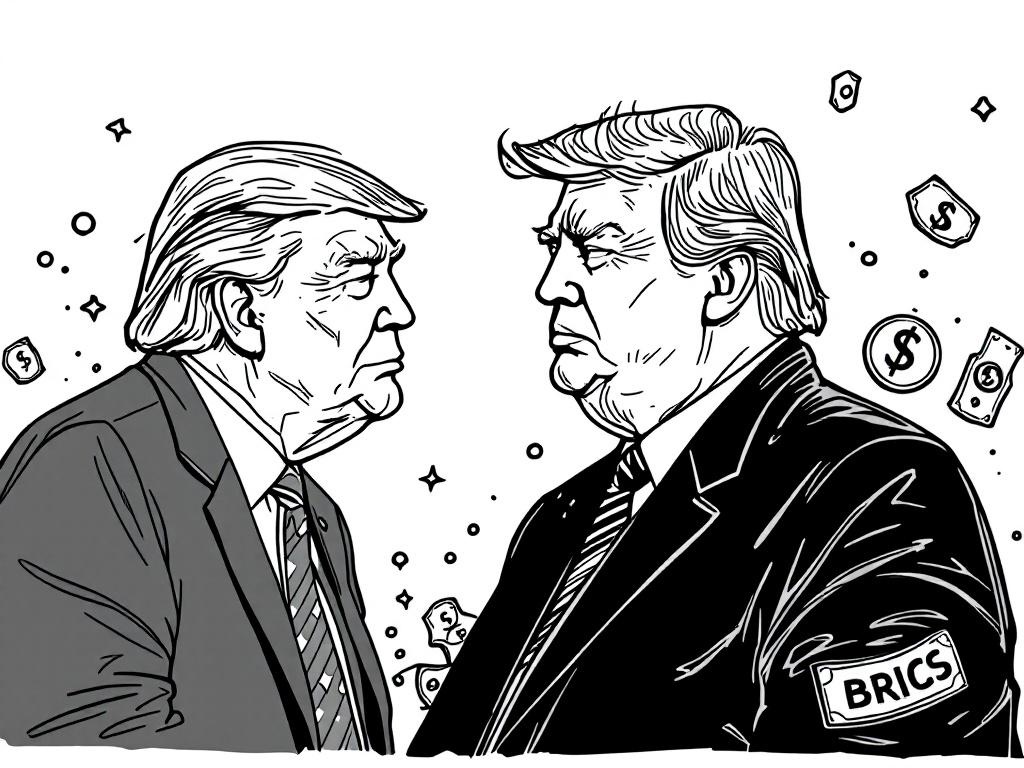Trump's Tariff Threats Against BRICS Nations

Washington, D.C., Monday, 7 July 2025.
President Trump threatens a 10% tariff on BRICS members, branding them ‘anti-American.’ This intensifies global trade tensions, highlighting potential disruptions in the economic landscape.
Trump’s Latest Tariff Proposal
US President Donald Trump has announced plans to impose an additional 10% tariff on countries that align themselves with the policies of the BRICS coalition. This coalition, which Trump has labeled as fostering ‘anti-American policies,’ includes nations such as Brazil, Russia, India, China, and South Africa, as well as recent additions like Egypt and Indonesia. Trump’s announcement comes amid escalating tensions between the US and the BRICS nations, a group that has grown rapidly, representing about 45% of the global population and over 35% of the world’s GDP [1][2].
Implementation Timeline and Global Reactions
The tariff letters are set to be dispatched on July 7, 2025, with the tariffs officially taking effect on August 1, 2025, unless trade agreements are forged by that time. This move has sparked significant concern across international markets, given that it coincides with the US dollar experiencing a substantial decline of over 10% against other major currencies in 2025, marking its lowest point in three years [2][3]. As a result, the announcement has created ripples of unease among countries that have strong economic ties with both the US and members of the BRICS bloc [2][3][4].
Varied International Responses
India, a key member of BRICS, has responded assertively to Trump’s allegations, emphasizing its strategy on ‘de-risking’ trade rather than pursuing de-dollarization objectives. Indian External Affairs Minister S. Jaishankar remarked that targeting the US dollar was never part of India’s strategic policy. Expressing a similar sentiment, former RBI Governor Shaktikanta Das highlighted that the primary goal is to manage trade risks rather than shifting away from the dollar [1][5]. Meanwhile, China has also criticized the use of tariffs as a form of political coercion, advocating for cooperation instead of conflict [1][2][5].
Broader Implications in the Global Economic Arena
The expansion of the BRICS bloc underscores its rising influence, now spanning 11 countries with ambitions to redefine economic governance beyond a US-centric order. Notably, a joint statement from BRICS leaders condemned ‘unjustified’ tariff measures, warning of their potential adverse effects on global economic stability [1][4]. As President Trump’s administration maintains its hardline trade policy, key stakeholders will be closely monitoring its implications on international trade relations and domestic economic policies in the lead-up to the US elections in 2026. The US’s potential imposition of tariffs on BRICS nations could significantly alter trade dynamics and economic partnerships moving forward [1][2][3].